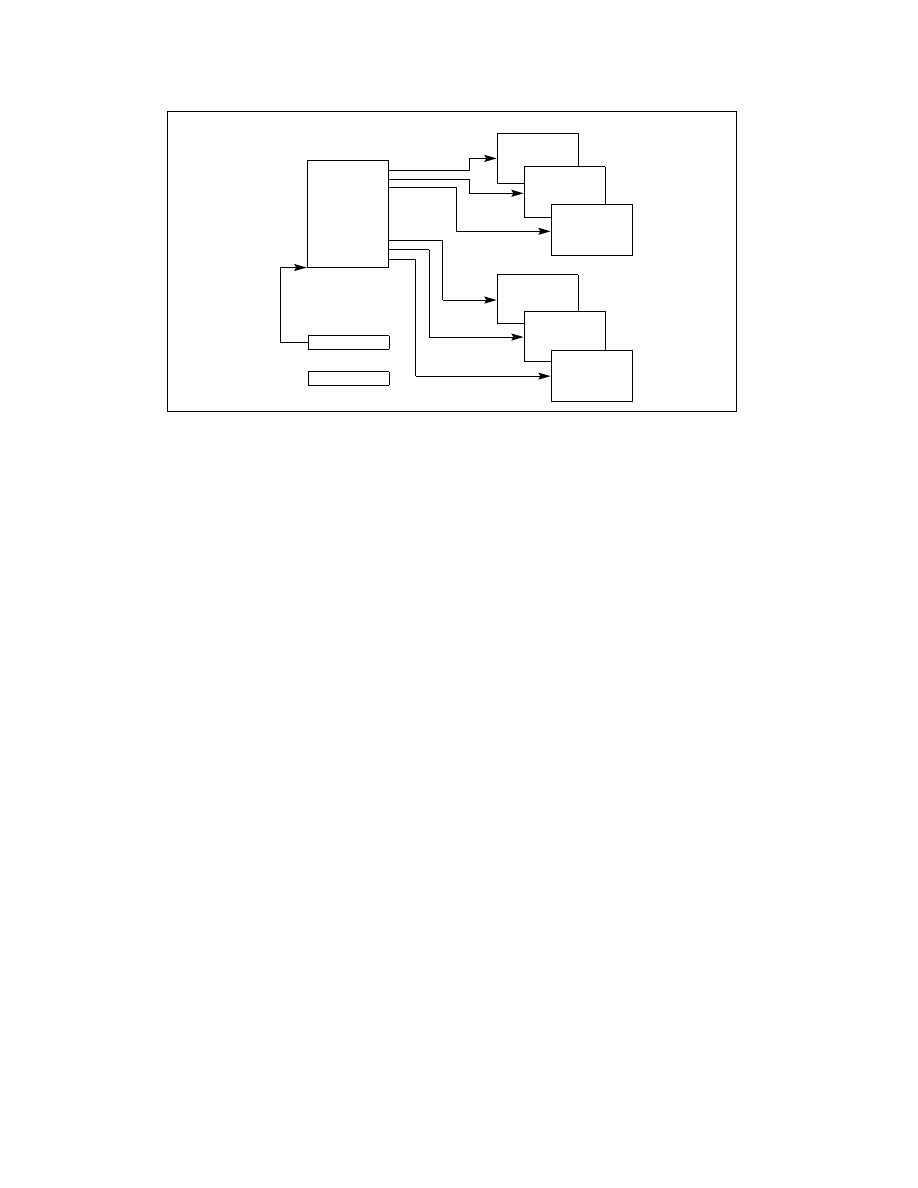
7-2 Vol. 3A
TASK MANAGEMENT
7.1.2 Task
State
The following items define the state of the currently executing task:
•
The task’s current execution space, defined by the segment selectors in the segment registers (CS, DS, SS, ES,
FS, and GS).
•
The state of the general-purpose registers.
•
The state of the EFLAGS register.
•
The state of the EIP register.
•
The state of control register CR3.
•
The state of the task register.
•
The state of the LDTR register.
•
The I/O map base address and I/O map (contained in the TSS).
•
Stack pointers to the privilege 0, 1, and 2 stacks (contained in the TSS).
•
Link to previously executed task (contained in the TSS).
Prior to dispatching a task, all of these items are contained in the task’s TSS, except the state of the task register.
Also, the complete contents of the LDTR register are not contained in the TSS, only the segment selector for the
LDT.
7.1.3 Executing
a
Task
Software or the processor can dispatch a task for execution in one of the following ways:
•
A explicit call to a task with the CALL instruction.
•
A explicit jump to a task with the JMP instruction.
•
An implicit call (by the processor) to an interrupt-handler task.
•
An implicit call to an exception-handler task.
•
A return (initiated with an IRET instruction) when the NT flag in the EFLAGS register is set.
All of these methods for dispatching a task identify the task to be dispatched with a segment selector that points to
a task gate or the TSS for the task. When dispatching a task with a CALL or JMP instruction, the selector in the
instruction may select the TSS directly or a task gate that holds the selector for the TSS. When dispatching a task
Figure 7-1. Structure of a Task
Code
Segment
Stack
Segment
(Current Priv.
Data
Segment
Stack Seg.
Priv. Level 0
Stack Seg.
Priv. Level 1
Stack
Segment
(Priv. Level 2)
Task-State
Segment
(TSS)
Task Register
CR3
Level)